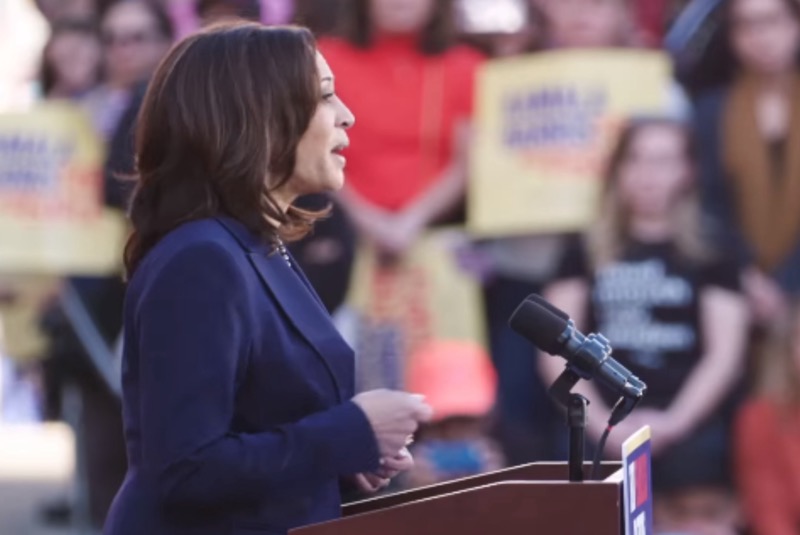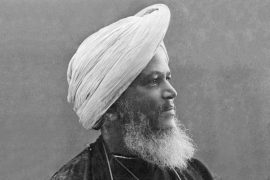Last week, America witnessed a serendipitous political reversal. When President Joe Biden was still the presumptive nominee, Democrats were in disarray. The party, which seemed to head towards electoral defeat, was divided on the right path forward.
But since Kamala Harris entered the presidential race, the Democrats have been united as a party, and her campaign has been getting a lot of positive press coverage. An alignment of unusual factors created a ‘black swan’ event that brought about Biden’s exit and allowed Kamala Harris to surge in the presidential race, where she seems to have a reasonable chance of victory. Let’s examine the unusual alignment of factors.
A few weeks ago, the disastrous Biden-Trump debate might have seemed like a stroke of bad luck as it sparked infighting among the Democrats and a wave of negative press coverage. However, it was a blessing in disguise.
The Biden campaign’s decision to agree to a first debate two months before the Democratic National Convention (DNC) was unprecedented. Presidential debates usually occur in September and October of the election year after the two parties nominate their candidates at their conventions.
The combination — of being behind in the polls for months and hoping they could decisively reset the race with a solid debate performance — prompted the Biden campaign to push for an unusually early debate date. If the debate had been held as usual after August, the Democrats would have been unable to force a change on the ticket as Biden would officially be the nominee, and all of the deadlines for ballot certification would have passed.
Biden’s debate was perhaps the worst performance in modern presidential history. He struggled to finish sentences and keep his train of thought and sometimes appeared confused. His display instantly revealed that Biden’s candidacy was no longer tenable.
In turn, it facilitated a consensus that Biden must step aside for Democrats to have a chance at winning. Ordinarily, it is hard to engineer such unanimity as commentators who present contrarian views do not generally agree on issues.
Moreover, in the weeks after the debate, Biden’s mental acuity varied day by day. If Biden’s debate performance had not been as shocking, a broad consensus about his un-electability and the need for him to step aside would not have emerged.
The election forecasts had darkened to such an extent that there was no rational way to deny that Biden was heading to a historic defeat. Furthermore, he risked dragging down-ballot Democrat candidates with him.
The unambiguous negative outlook helped Democrats realise that any replacement was better than Biden. Convinced that they were facing an almost certain defeat, the Democrats opted for a high-risk, high-reward strategy.
Until this point, Harris was considered the most likely successor. However, the belief that she was a profoundly flawed candidate trapped the Democrats in paralysis and inaction. However, after Biden’s disastrous performance, the Democrats got the confidence to push ahead with Harris.
The stakes of this election are astronomically high. It is widely accepted that Trump will attempt to dismantle democratic institutions—meaning Democrats were primed to take unprecedented courses of action to defeat Trump.
The high stakes fortified moderate Democrat House and Senate caucus members to publicly call for Biden to step aside. Such a public display of collective rejection of one’s party leader has never happened before.
The high stakes of the race also disincentivised other contenders to challenge Biden’s chosen successor, Harris. Perhaps that was because the challengers would have been wary of becoming known as the person who lost American democracy to Trump.
Nancy Pelosi — the most powerful congressional leader Democrats have had — was pivotal in influencing Biden to step aside. Despite Biden’s reluctance to engage in a conversation, she kept a line of communication open, convinced him to examine poll numbers dispassionately, and persuaded him to do the right thing. Finally, shethreatened to publicly release internal polling data, making it impossible for him to cling to his re-election bid.
Indeed, the Democrats are fortunate to remain competitive in this most important of elections, giving American democratic institutions a fighting chance to survive. But how was Kamala Harris’ momentum possible?
When we look at the excitement around Kamala Harris — ‘Kamala-mentum’ as it has come to be known — it becomes clear that it is a black swan phenomenon that could not have been engineered in advance.
As a candidate, Kamala Harris is the perfect foil to Trump. An aggressive yet centrist candidate, she is most suited for the role — a former prosecutor pitted against Trump, a convicted felon.
She has ascended to being the nominee designate through the inside track — from California Senator to failed presidential candidate to vice president and now Biden’s successor. She might have had difficulty prevailing through a competitive primary due to some of her defining political characteristics.
She had difficulty in her 2019 presidential run partly because she is a non-ideological centrist in the Democratic Party. She remoulded herself into a policy heavyweight at a time when virtue signalling to the left had become accepted as de rigueur for a successful candidate.
Her hallmark is a signature aggressive approach to political cross-examination and debating, a skill gleaned from her long career as a prosecutor, district attorney and state attorney general. It is unclear whether Harris would have prevailed in a tough primary fight because her superpower is taking down opponents in the opposing party. In contrast, she has struggled to strike the right balance when competing with opponents from the same party, where unabashed aggression is viewed with disdain.
In addition, matched against any presidential opponent other than Trump, Harris might have been considered too aggressive given the historically polite and decorous nature of American political competition.
In this sense, her match-up against Trump is almost the perfect election for Harris to contest. Given the incredible energy and enthusiasm that has enveloped her campaign, she must now be considered the best candidate to fight Trump.
That she did not have to fight her way to the nomination through a tough primary fight made Harris’s rise more likely. If she had ascended through primaries, Harris would have been damaged due to the need to adopt left-wing positions that might have been difficult to shake off to appeal to the swing voters necessary to win the general election.
In addition, in the past, primary competition led to deep intra-party divisions. Case in point: the 2016 Hillary Clinton and Bernie Sanders battle for the Democratic nomination. The manner in which Harris became the nominee designate allowed the Democratic Party to fuse to a degree unimaginable even two weeks ago. The incredible momentum has also erased tensions from infighting, as everyone agrees that Democrats under Harris are in a better position than when the party was shackled to Biden.
Biden’s late withdrawal from the race, one month before the DNC convention and even less time before the first ballot access deadline in Ohio, was also highly propitious for a swift convergence around Harris. That meant other contenders had no time to mount a realistic challenge.
The logistical challenge of building a new campaign organisation from scratch (and amassing a large campaign war chest) would have been insurmountable for anyone but Harris, given she legally had full access to all of the resources of Biden’s campaign (as his running mate).
Additionally, by the time Biden finally stepped aside, it was commonly accepted that there was no longer enough time to plan a set of mini-primaries before the DNC convention, which essentially precluded Democrats from charting any course other than to endorse Harris in quick succession.
Biden’s decision to step aside released the pent-up frustration within the Democratic Party and turbocharged Harris’ campaign. The truncated length of the race (three months) may also favour Harris, who seems, in political terms, to be more of a sprinter than a marathon runner.
The Kamala Harris we now see seems different from the directionless candidate we saw in 2019. She has evolved as a politician and matured as the vice president of the Biden administration.
In hindsight, Biden’s decision to pick Harris as vice president was perhaps among the best decisions. Nothing could have predicted the excitement that she would be able to engender four years later. But the moot question is: how long will Harris be able to maintain the momentum of the campaign rollout?
-30-
Copyright©Madras Courier, All Rights Reserved. You may share using our article tools. Please don't cut articles from madrascourier.com and redistribute by email, post to the web, mobile phone or social media.Please send in your feed back and comments to [email protected]











